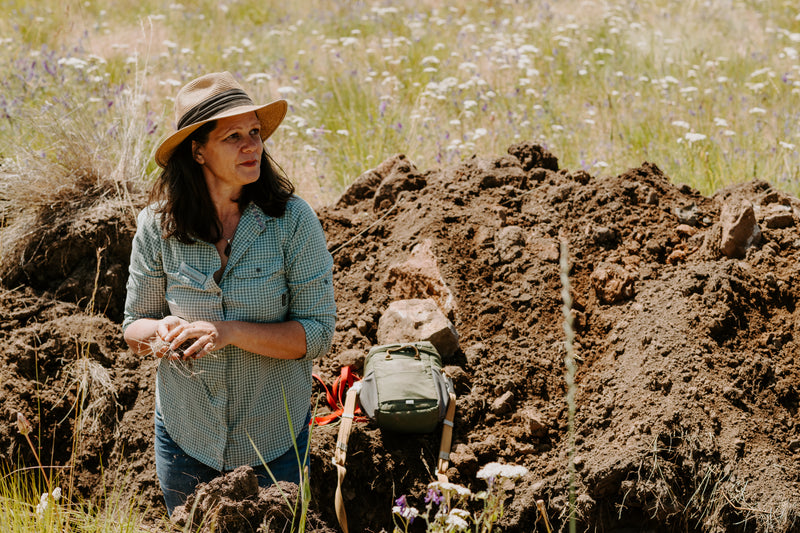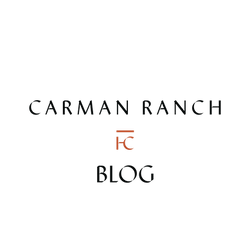Our Heroes: Nicole Masters

“What did you say about dirt?” my 12-year old daughter asked. “We call it soil,” corrected Nicole. “Dirt is what you get under your fingernails.”
I’ve dreamt about spending time with Nicole Masters for months. I emailed her so many times, I expected her to block me. Between a schedule packed with travel and speaking engagements, a global pandemic and Nicole residing part-time in her native New Zealand, it’s been tough to get a date on her calendar. But last Friday, the stars finally aligned and Nicole spent the day teaching a soil health workshop on the ranch.
We were joined by Carman Ranch producers and a board member, a doctor and a journalist, members of NRCS, practitioners, the agronomist from the local feed coop, and a lot of cowboy hats. Our ranch manager, Sam, dug trenches in our rangeland and irrigated meadows, so we could see the entire soil profile, and Nicole gave a basic primer on soil health. Then we looked at dung beetles, water infiltration, compaction layers and the nodules on the legumes. (Were they white, pink or--we hoped--red?) Watching a diverse group like ours geek out about whether a plant has a rhizosheath (a dreadlock-like covering that’s created when soil sticks to a plant’s roots) was amazing.

SOIL HEALTH
Nicole talked to us about nutrients and whether soil is bacterial or fungal; about plant succession and the role of livestock. The parallels between soil health and human health are striking. For example, when soil lacks just two nutrients, that deficiency wreaks havoc on the entire ecosystem. Sometimes grazing management is the best tool we have to regenerate degraded soil. Other times, applying what’s missing can jumpstart its recovery. (Soil tests and plant tissue tests allow us to identify those missing nutrients.).
“What are your weeds telling you?” Nicole asked. In our rangeland and meadows, the annual grasses were scavenging molybdenum, which was deficient in both the soil and the other plants. A very small amount of moly, she said, could take away the job of the weeds.
It was Nicole’s larger takeaways that left the most lasting impression: Degradation in our landscape took place a century ago. By reading calvary accounts, she has been able put together a picture of the landscape the first white people experienced. Several ranchers in the group remembered hearing about “grass you can dally around the saddle horn,” and “chest-high grass.” I’d read about “knee-high bunchgrass, fat cattle and a trout stream in July” in an old newspaper story about our ranch. Today, the creek running through the ranch is dry by June, and the trout are long gone.
Nicole wasn’t suggesting that we should--or could--go back. Those days are gone and we humans (of European descent, who’ve been here fewer than two centuries) have altered the landscape permanently. She was saying that we have no idea of what’s possible, of how land could look and feel, because the degradation that took place before we were born has limited our imaginations and our expectations.

As always, the lessons we learn from the land and the inspiring people who work it inform every aspect of being human. Nicole challenged us to dream big, and to expect more when it comes to land management. Given the dramatic ways in which our world is changing, I think the opportunity exists to do those things in every aspect of our lives. What are the equivalents of productivity and health in relationships, family and work, to grass so tall you could tie it around your saddle horn?
It’s the right time to be asking these questions, and I’m incredibly grateful for people like Nicole Masters, who’ve made it their life’s work, to bring these issues to the forefront.
Cory Carman


Translation missing: en.blogs.comments.with_count